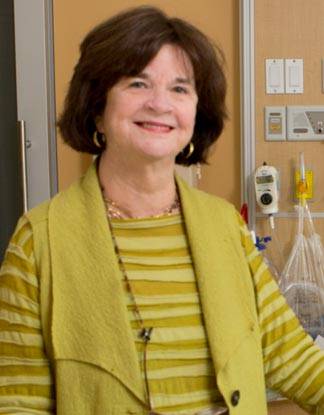On the second floor of Lewis Thomas Lab at Princeton University, researchers are working to better understand the complex interactions between environmental conditions and human DNA.
At the University of Michigan, researchers are using magnetic resonance imaging to study the brains of adolescents from disadvantaged backgrounds. And researchers at Stony Brook University are examining what affects sleep patterns among such teenagers.
These projects and many others have been made possible by the Fragile Families and Child Wellbeing Study — a research project based at Princeton and Columbia University that has built an unmatched trove of data by following 3,700 children born to unwed parents in large U.S. cities from their birth in the last years of the 20th century well into adolescence.
The study has gathered information on the children's physical and mental health, cognitive function, social-emotional skills, schooling and living conditions, as well as the makeup, stability and financial resources of their families.
Using that information and data on a control group of children born to married parents, the Fragile Families study has played a foundational role in helping researchers understand the capabilities and deficits of unmarried parents and the challenges faced by their children. Results of the research have painted a detailed — and worrisome — portrait of these unmarried parents and their children.
"Most of these unmarried parents wanted to marry and had 'high hopes' for a future together at the time of their child's birth," said Sara McLanahan, the William S. Tod Professor of Sociology and Public Affairs, director of Center for Research on Child Wellbeing, and principal investigator for the Fragile Families study. "At the same time, over a third of these parents had not finished high school, and only 3 percent had a college degree. A large proportion of the fathers — nearly 40 percent — had spent some time in jail or prison. In short, the story was 'high hopes and low capabilities.'"
As compared with children born to married parents, those born to unmarried parents have lower scores on cognitive tests, more mental health problems and more physical health problems such as asthma and obesity, even after taking account of differences in their families' economic resources.
The Fragile Families data, which cover a diverse group of families with many from disadvantaged backgrounds, have also proven important to researchers studying a wide range of related topics. More than 6,000 researchers have accessed the project's publicly available data. The data have been used in more than 550 articles in peer-reviewed journals, 46 books and book chapters, 85 dissertations, and more than 80 working papers. Princeton students often use the data for their senior theses.
"The Fragile Families study has inspired numerous new scholars — in sociology, demography, economics, psychology and the biomedical sciences — to focus their research on child wellbeing," said Christina Paxson, president of Brown University, who was a principal investigator on the study during her time on the Princeton faculty. "The investigators have not only made it a priority to make the data readily available. They have also offered numerous data workshops that help graduate students and early-career researchers learn about the great potential of the study."

Fragile Families researchers have collected data on children from birth to age 15 from a range of sources, including parents, children, caregivers and teachers. Data collection has varied in each wave of the survey based on research needs and funding. (Graphic by Kyle McKernan, Office of Communications)
The emergence of 'fragile families'
The percentage of births to unwed parents in the United States began to rise around 1960, and by the late 1990s, about 35 percent of all children were born to unmarried parents. Combined with a decline in divorce, this trend meant that most single mothers and most fathers owing child support had never been married.
"There was considerable debate over the nature of these partnerships, with some people arguing they were 'one-night stands' and others arguing they were much more committed," McLanahan said.
With prompting from Ron Mincy, then an official at the Ford Foundation, which had funded some of their earlier work, McLanahan and her colleague and husband Irwin Garfinkel, the Mitchell I. Ginsberg Professor of Contemporary Urban Problems at Columbia, began to study what Mincy termed "fragile families."
McLanahan and Garfinkel wanted to focus on the unmarried fathers: Who were they? Could they afford to support their children? Would they?
Data were hard to find. The fathers were hard to track down, and few men questioned as part of broader surveys admitted to having fathered a child out of wedlock. The answer, McLanahan said, would be to start at the hospital, interview new mothers and ask them to help find the fathers who didn't come visit the baby. Staying connected to the mothers would also help researchers keep track of the fathers because mothers were more residentially stable than fathers. That led to a major shift in focus that would transform the project.
"We started off being interested in the father and what he could pay to support the child, but pretty soon we realized that the much more interesting and broader question was just how do these children who are born to unmarried parents do?" McLanahan said. "What began as a study of unmarried fathers morphed into a much more ambitious, longitudinal study of unmarried parents and their children."
The first wave of data collection began in 1998 and took place in 75 hospitals in 20 cities across the country over two years. The result was a nationally representative sample of children born in large U.S. cities. Researchers interviewed mothers of newborns in their hospital room, spending 35 to 45 minutes gathering a wide range of information about mother, father and the newborn.
"We'd say we'd like to interview the father, and we would wait to see if he came to visit the baby," McLanahan said. "If he didn't, we would try to reach him by phone."
Over two-thirds of unmarried fathers were interviewed at the hospital.

Data collection for the Fragile Families study began at the bedside of new mothers at hospitals in 20 large U.S. cities more than 15 years ago, an effort coordinated by McLanahan and other researchers.
Important initial funding came from the Ford Foundation and the Robert Wood Johnson Foundation, and major funding throughout the project has come from the Eunice Kennedy Shriver National Institute of Child Health and Human Development and more than a dozen other foundations.
Other researchers — including Paxson, Jeanne Brooks-Gunn at Columbia and others — came on board with related research projects that helped support the core study. Those researchers brought more funding and, just as important, additional expertise and new perspectives to the project, McLanahan said.
Researchers returned to the field to conduct follow-up research at one, three, five and nine years after the initial survey. A 15-year follow-up is underway, with data collection expected to continue until the middle of 2016. The goal is to interview 90 percent of families who participated in the nine-year follow-up.
"The breadth of data collected by the Fragile Families study is remarkable," Paxson said. "The study started with the innovative idea of enrolling new families in the study at the time of a child's birth. Over the next 15 years, these 'in-hospital' interviews were supplemented with telephone and in-person interviews, child assessments, administrative records collection and more. The data have been put to excellent use: elucidating the factors that promote the health and development of children and families, and using these findings to inform public policy."
The worrisome portrait
While most of the unwed couples in the survey were living together or dating at the birth of their child, 61 percent of the couples had broken up by the child's fifth birthday. The families of unmarried parents experienced a great deal of instability in relationships, as mothers and fathers broke up, formed new relationships and, in many cases, had children with new partners.
"Thus the vast majority of children born to unmarried parents experience a great deal of family instability and complexity, defined as families composed of half siblings and stepsiblings," McLanahan said. "These families require a great deal of time and energy to manage, and the children in these families do less well than children in stable two-parent families, especially in terms of their social and emotional development."
The struggles of these children with social-emotional problems present a big challenge that is too often overlooked in education and other areas, McLanahan said.
"Education policy should address the impacts of instability and expand beyond its focus on improving test scores, which, for many children, is too narrow an approach for securing long-term success," McLanahan said. "It must also tackle the mix of aggression, anxiety and other long-term mental health problems, particularly among boys, that can be dominant legacies of family instability."

Princeton senior Terry Zhu, who is majoring in molecular biology, is conducting research for her senior thesis in the lab of Daniel Notterman, a lecturer with the rank of professor in molecular biology and a principal investigator on the Fragile Families study. Zhu's research focuses on the effect of chronic stress on telomeres, a research area advanced by Fragile Families data.
Research using DNA samples from study participants has begun to yield additional insights that underscore the way living in disadvantaged situations affects parents and children right down to their DNA. Daniel Notterman, a pediatrician and a lecturer with the rank of professor in molecular biology at Princeton, joined the Fragile Families project in 2007 with the goal of better understanding how our genes interact with our environment to affect physical and mental health.
Notterman — along with Princeton and Columbia colleagues and Colter Mitchell at the University of Michigan — has used the Fragile Families data and genetic analysis to show in mothers and boys that certain genetic characteristics make people more susceptible to negative effects of stressful environments but also more likely to flourish in positive environments.
"A gene-variant combination that was adverse in one environment was favorable in another environment," Notterman said. "We showed these genes don't convey risk, as some thought, but sensitivity to the environment."
Notterman and his colleagues are beginning to examine the policy implications of their findings, such as the affect parental incarceration has on children.
"I want to emphasize that we hope to be able to use the genetic and demographic and other social science data to begin to look at broad questions of policy in a systematic way, not just policy but policy directed to human health," he said. "This work is soon going to become important for policymakers."

Zhu, left, and Beverly Nguyen, right, are both seniors conducting research in the lab of Daniel Notterman, center, in part based on data collected as part of the Fragile Families study.
Into the future
McLanahan and other researchers are putting the finishing touches on a book that uses Fragile Families data to study the impact of the Great Recession that began in 2007 on families, tackling topics including the economic effects of the recession, how the welfare state responded, and the effects on children, their parents and the relationships of the parents.
In Notterman's lab, new samples and data from the Fragile Families study are arriving alongside important technological and methodological advances.
"We're just now beginning to develop the tools and to have the mass of data to apply big genetic data to the big social science data that Sara and her colleagues have collected over the last decade and a half," Notterman said. "We think there will be a great deal of excitement over this work over the next three or four years."
Other academic publications continue to flow from the project as well. One example is a journal article titled "The Great Recession and Mothers' Health" published in the November issue of The Economic Journal.
In the article authors Janet Currie, the Henry Putnam Professor of Economics and Public Affairs at Princeton and a Fragile Families principal investigator; Valentina Duque, a postdoctoral researcher at the University of Michigan; and Garfinkel use Fragile Families data to investigate the impacts of the Great Recession on the health of mothers. The researchers report increases in the unemployment rate are related to decreases in self-reported health status and increases in smoking and drug use.
Another new project is using Fragile Families data, combined with other sources of information, such as county-level data on economic mobility and city-level data on school and neighborhood quality, to understand what allows some children to enjoy more success in life than others from similar backgrounds.
McLanahan said the researchers are making plans to continue what is already one of the longest-running birth cohort studies in the United States, using Internet-based outreach to continue following the parents and children.
Many of the parents the researchers first met at a hospital bedside are now in their 40s and facing health problems related to the stresses of their lives. No longer children, their offspring will soon be leaving home, entering the workforce and beginning families of their own.
And as those transitions happen, the researchers hope to follow them and extend the lessons learned from the Fragile Families and Child Wellbeing Study.

